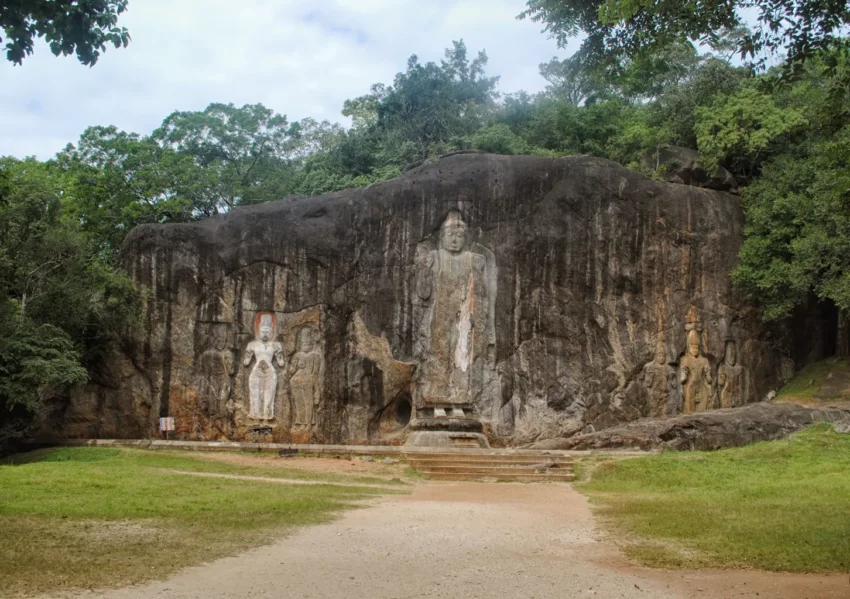The Historical and Cultural Significance of Buduruwagala
Buduruwagala, an ancient Buddhist temple located in the Monaragala district of Sri Lanka, stands as a testament to the religious and artistic heritage of the island. This complex, dating back to the 10th century AD, is renowned for its seven colossal statues, which are carved directly into a rock face. These figures are significant not only for their size but also for their affiliation with the Mahayana school of Buddhism, which saw a period of prominence in Sri Lanka during this era.
Get your dose of History via Email
The Name and Location of Buduruwagala
The name Buduruwagala is derived from the Sinhala words for Buddha (Budu), images (ruva), and stone (gala), effectively meaning “the rock of Buddhist sculptures.” Situated approximately 4 miles southeast of Wellawaya, this site is a pivotal point of pilgrimage, particularly for adherents of Buddhism who seek to pay homage to its historical and spiritual significance.
The Statues of Buduruwagala
The centerpiece of the Buduruwagala complex is a gigantic standing Buddha statue, which at 51 feet in height, is the tallest of its kind on the island. This statue, along with the others, exhibits traces of its original stuccoed robe, and remnants of paint suggest that these figures were once vividly adorned. The central figure is flanked by three figures on each side, each with its own unique attributes and presumed identities.
To the right of the Buddha, the central figure is believed to be the Bodhisattva Avalokitesvara, a symbol of compassion in Mahayana Buddhism. Adjacent to this figure is a female form, identified as Tara, who is considered to be Avalokitesvara’s consort. This grouping also includes a figure thought to represent Prince Sudhana.
On the left side of the Buddha, the central figure is speculated to be Maitreya, the future Buddha. Accompanying Maitreya is Vajrapani, a figure holding a vajra, which signifies the Tantric aspects of Buddhism present in Sri Lanka. The identity of the adjacent figure is debated, believed to be either Vishnu or Sahampath Brahma. Notably, several of these figures are depicted with a unique hand gesture, a beckoning motion that adds to the mystique of the ensemble.
Historical Context and Mysteries
The exact origins and the original name of Buduruwagala remain shrouded in mystery, with historical records scarce. Scholars generally agree on a 9th or 10th-century AD timeframe for the creation of these sculptures. The site is thought to have served as a hermitage for Buddhist monks, with the presence of numerous Bodhisattva images indicating a strong Mahayana influence.
An intriguing feature of Buduruwagala is a carved shape resembling a flame, located on the same rock as the sculptures. This shape, always wet with an oil smelling distinctly of mustard, has baffled observers due to its inexplicable source.
Conclusion
Buduruwagala stands as a monumental relic of Sri Lanka’s rich Buddhist heritage. The site’s colossal sculptures not only showcase the artistic prowess of the era but also reflect the religious dynamics and Mahayana Buddhist influences present at the time. Despite the mysteries that envelop its history, Buduruwagala continues to be a significant cultural and spiritual landmark, attracting scholars, pilgrims, and tourists alike.
Sources:

